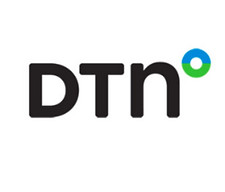GET THE ALERT: Know when to Prepare & when to take ACTION
This page is intended to provide you with multiple resources on how to stay informed for threats that could impact your household. What would you do if you had an extra 6 to 13 minutes to react for a tornado, or 24-48 hours for changes in weather, or some other significant threat? Make sure you can GET THE ALERT through multiple means in the event of a system failure or communications congestion.
Clinton County Emergency Alerts (CCEA)
This is the most important alert you can sign up for (includes weather, city/village alerts, disaster volunteer service, and medical situations. FREE, local, and built for you. Add multiple phone numbers and or emails. Weather alerts are tied to the address you provide, however, if you want other alerts, see the list below. To sign up, click the CCEA logo.
But Wait, there's more! You can text any of the keywords below to the number 69310 to opt-in on specific alerts:
CC247WXALL All county weather alerts 24/7.
CCTRAFFIC Lets you know when responders has requested information be shared about a temporary road closure due to an incident and operations are being conducted on-scene.
If you text one of the following keywords to 69310, you will be added to a city/village list for when information is shared from your local law enforcement, fire department, EMS, mayor, and more.
CCBLANCHESSTER
CCCLARKSVILLE
CCMARTINSVILLE
CCMIDLAND
CCNEWVIENNA
CCPORTWILLIAM
CCSABINA
CCWILMINGTON
Interactive NWS (iNWS)
Great backup and way to get weather notifications as soon as NOAA triggers a CAP. You can setup multiple locations and receive the notice by text and/or email. If you require some sort of "record" of weather events, this may be a great FREE addition to add to your alerts portfolio. Click on the NOAA logo to sign up!

Real-Time Weather Observations (DTN)
If you host events with large populations of people and require weather support. Consider contacting EMA and requesting to be added to short-term or persistent real-time weather notifications (e.g., lightning, precipitation, winds, et cetera). Take the guess work out of making those Go/No-Go decisions and let DTN help you make the right call. For more information, contact EMA at (937) 382-6673. This is a free service and is available for the following locations: Blanchester, Clarksville, Lees Creek, New Vienna, Port William, Sabina, and Wilmington.

EMA licensed Wx Sentry App (DTN)
If you are a first responder (chief, lieutenant, sergeant), school district official (superintendent, operations, transportation, athletic director), parks official (superintendent, athletics lead), or host for major events in Clinton County, then you may want to reach out to EMA. 100 licenses has been secured for the DTN Wx Sentry App. This subscription paid weather service provides forecasting, custom lightning and weather notifications/denotifications, and access to a staff meteorologist to help ensure public safety. Contact EMA at (937) 382-6673 to see if this option is available to you.
iNWS (CCEA)
Great backup and way to get weather notifications as soon as NOAA triggers a CAP. You can setup multiple locations and receive the notice by text and/or email. If you require some sort of "record" of weather events, this may be a great FREE addition to add to your alerts portfolio. Click on the NOAA logo to sign up!
Space Weather Prediction Center (SWPC)
SWPC provides a wide range of alerts, warnings, watches and forecasts you can receive through e-mail within moments of being issued. The sections below provide an overview of the categories of events for which products are available and then provide brief listings of the individual products. Click the SWPC logo for more information.

Curated list of Weather Forecast apps for your Smarty-Phone (NWS)
Below are various resources from across the Weather Enterprise including links to commercial, academic, and governmental products and services. These lists contain the providers/services that we know.
DISCLAIMER: NWS (nor EMA) does not endorse the services or providers listed. Information presented is believed to be correct at the time of posting. Any fee or payment required for service is the responsibility of the consumer. The NWS recommends using multiple sources of information to validate the information that is received.
Federal Emergency Management Agency (FEMA) app for your Smarty-Phone
The FEMA app is your personalized disaster resource, so you feel empowered and ready to take charge of any disaster life throws your way. Click on the appropriate logo to view the app in your device store. Or learn more at the FEMA app information page.
American Red Cross (ARC) app for your Smarty-Phone
We built the FREE Emergency app to help you prepare. It is simple to use and lets you customize 40 different weather alerts with fast notifications. It provides step-by-step guides to help you prepare and explains how climate change has impacted each hazard. You can easily find open Red Cross shelters with an interactive map. Click on the appropriate logo to view the app in your device store. Or learn more about this app and others at the ARC app information page.

How to program your NOAA Weather Radio
How to program your NOAA weather radio:
-
Purchase a NOAA weather radio.
-
Follow the instructions provided for your particular model.
-
If your radio asks for a SAME code, enter 039027 (this should automatically select the transmitter for your area). Otherwise go to #4.
-
(Skip if #3 is used) If your radio asks you to input your radio frequency or transmitter locations choose from:
-
WXJ46 162.475 (Miamisburg, Ohio)
-
KIH42 162.550 (Covington, KY...only as a backup for Blanchester)
Pro-TIP: Review the settings of your NOAA weather radio and ensure you are only receiving the types of alerts you want at 2 am in the morning (i.e. Tornado WARNING versus Frost WATCH).







